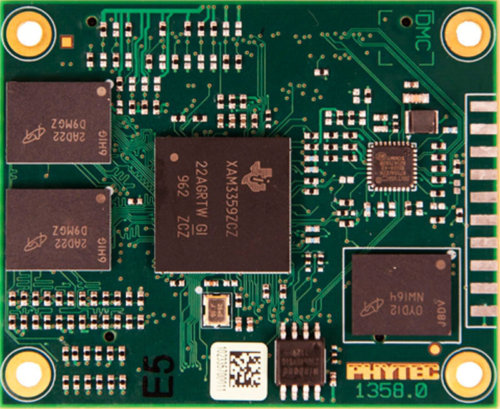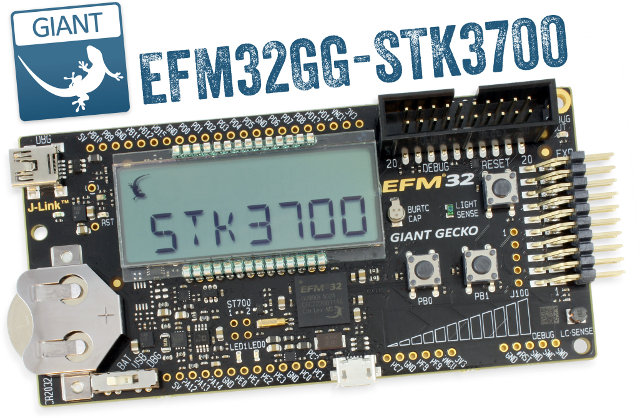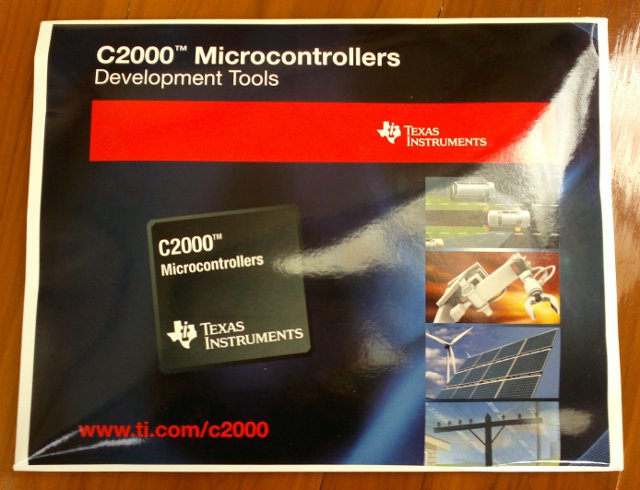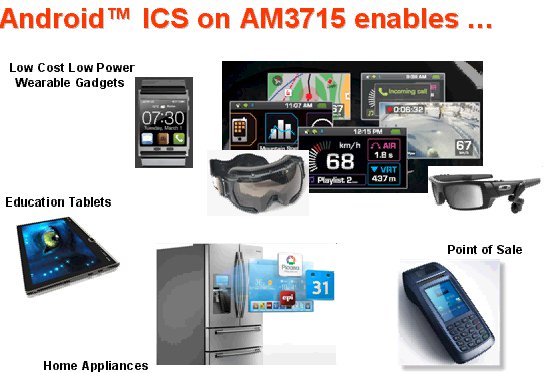MIPS and Microchip organize a promotion on a MIPS PIC32 MCU development Kit. The Microstick II delivers a development hardware platform for Microchips MIPS-based 32-bit microcontrollers. It’s USB-powered and includes an on-board debugger/programmer, a DUT socket for easy device swapping, a user LED and reset button. Key features: Integrated USB programmer / debugger – No external debugger required USB Powered – Ease of use, No external power required MPLAB support. DUT Socket – Flexible, Easy device replacement 0.025” Pin headers – Enables plug-in to Breadboard with room for jumper wires Easy access to all device signals for probing Small size – Smaller than a stick of gum at 20 x76mm – Easily Portable On board User LED and Reset Switch Free demo code Microstick II supports all 3.3V PIC24FJ, PIC24H, dsPIC33, and PIC32 SPDIP packaged devices which are included in the kit. Microkit II normally costs 34.95 USD, but is […]
25 USD Hacker Friendly Electric Imp “WiFi-ises” Your Coffee Machine
Electric Imp is a device in an SD card form factor that aims at providing Wi-Fi connectivity to household appliances at low cost and bringing the Internet of Things (IoT) closer to reality. The Imp will also connect to a Cloud service handled by the company (which is also called Electric Imp). The device Wi-Fi connection can easily be configured using an iOS or Android smartphone thanks to BlinkUp, a patent-pending scheme supporting WEP, WPA and WPA2 encryption schemes as well as WPS setup. Electric Imp developers expect this device to save resources (e.g. electricity) by taking into account environmental conditions (e.g. occupancy, temperature..), improve security & safety and overall provide better monitoring and control of devices. For example, this could enable support services to remotely diagnose a device, and provide timely customer support. Here are the Electric Imp hardware specifications: ST Micro STM32 Cortex M3 MCU 802.11b/g/n WiFi 6 […]
Phytec phyCORE-AM335x System on Module (SOM) Based on TI Sitara AM335x
PHYTEC announced the phyCORE-AM335x System on Module (SOM) powered by Texas Instruments Sitara AM335x Cortex-A8 processor clocked at 720Mhz and PowerVR SGX530 GPU. This SoM targets industrial applications and supports standards such as EtherCAT, Ethernet/IP, PROFINET, PROFIBUS, POWERLINK, SERCOS-III and CANopen. Here are phyCORE-AM335x SOM specifications: TI’s Sitara AM335x ARM Cortex-A8 processors @ 720 MHz (AM3352, AM3354, AM3356, AM3357, AM3358 and AM3359) PowerVR SGX530 Graphics (AM3359, AM3358, AM3354 only) 512 MB DDR3, 512MB/1GB NAND, 8 MB SPI Flash, 32 KB EEPROM 6x UARTs, 3x I2C, 2x McASP, 2x SPI, 2x CAN 2x USB OTG 2x 10/100/1G Ethernet (Gigabit PHY on carrier board) 24 bpp TTL or LVDS 44 x 50 mm form factor -40 degrees to +85 degrees C temperature range Linux, Compact 7, Android The phyCORE-AM335x SOM will be available in a PHYTEC Rapid Development Kit (RDK) including: phyCore-AM335x SOM A carrier board Board support packages (BSP) Demo images […]
Olimex A13-OLinuXino Could Become a Proper Raspberry Pi Alternative
Olimex recently announced they produced the first 10 prototypes of iMX233-OLinuXino Development Board, a low-end Linux development board that will cost 30 Euros, with specifications inferior to the Raspberry Pi. They have now announced their plan to design A13-OLinuxXino development board based on the new AllWinner A13 chipset, a strip down version of AllWinner A10 without HDMI nor SATA. Thanks to the low cost of AllWinner A13 (5 USD for very large orders / 10 USD in smaller quantities), Olimex plans to sell the new A13-OLinuxXino board for the same price as the iMX233-OLinuXino but with a faster 1GHz Cortex A8 processor and 256 or 512 MB RAM. I assume their will be 2 versions as well, the MINI for 29,95 Euros and the MAXI version with 2 more USB 2.0 host ports and 10/100Mbit Ethernet for 44.95 Euros. This board could be a very interesting alternative to the Raspberry […]
Energy Micro Unveils 2 New Gecko Cortex M3 Starter Kits: EFM32LG-STK3600 and EFM32GG-STK3700
Energy Micro introduced two starter kits (STK) for complex battery-powered products such as portable health and fitness devices and smart accessories: EFM32LG-STK3600 – Based on the EFM32LG990F256 MCU (Cortex M3 ) with 256KB on-chip flash and 32KB RAM. EFM32GG-STK3700 – Based on the EFM32GG990F1024 MCU (Cortex M3 ) with 1MB on-chip Flash and 128KB RAM Both the Leopard Gecko and Giant Gecko MCU can directly control a TFT display and feature a USB driver that supports the Host, Device and On-the-Go (OTG) protocols. The new STKs are also equipped with light, metal and touch sensors which allow designers to work with the LESENSE Low Energy Sensor interface allowing passive sensing of 16 sensors without host CPU intervention. The hardware feature set is completed by a USB plug, 32MB on-board NAND Flash, LCD and a variety of LEDs and push-buttons. The two EFM32 starter kits includes debugging support with a full […]
Texas Instruments F28069 Piccolo controlSTICK Unboxing and Review
I’ve recently received a TI F28069 Piccolo controlSTICK evaluation kit after winning a game organized by Mouser and Texas Instruments on Facebook. I’ll show what’s the content of this C2000 MCU development kit and play around with the development tools provided. Mouser sent the development tools by Fedex which took 6 days to arrive in Thailand, and the package with the development tools looks like the one below. You’ll find the following in the package: F28069 Piccolo controlSTICK USB Cable 6x Jumpers 2x Cables to connect to external hardware CD with Piccolo F28069 controlSTICK development tools Here’s a closer look to the top of Piccolo controlSTICK, with (left to right) the JTAG emulator chip, C2000 MCU (320F28069PNA) and connector… …and the bottom of Piccolo controlSTICK. Now let’s have a look at the content of the CD: The Drivers directory contains the drivers needed for the controlSTICK development kit (also used […]
Texas Instruments Releases Android 4.0.3 DevKit for Beagleboard-XM and Beaglebone
After collaborating with arowboat, android-porting and Linaro communities, Texas Instruments has released Android 4.0.3 development kits for Sitara microprocessors which support Beagleboard-XM (Sitara DM3730) and Beaglebone (Sitara AM335x) low cost development boards, as well as other Sitara-based evaluation modules and development boards. Android 4.0.3 Devkit for Beaglebone If you have a Beaglebone (and an LCD or DVI-D cape), you can use TI Android ICS 4.0.3 DevKit v3.0.1, a release providing an Android ICS 4.0.3 distribution for TI’s Sitara AM335x ARM Cortex A8 Processors. This DevKit provides Android sources with pre-integrated SGX (3D graphics accelerator) drivers, TI hardware abstraction for Audio, WLAN & Bluetooth for TI WL1271 chipset, USB mass storage, etc, as well as development and debugging tools such as a toolchain, TI CCSv5, ADT plugins and more, which are provided to build custom Android solutions for the embedded market more easily. The pre-built images includes Android default apps, multimedia […]
Xilinx Zynq-7000 Extensible Processing Platform (EPP): Dual Cortex A9 + FPGA SoC
The Xilinx Zynq-7000 EPP (Extensible Processing Platform) is a new class of device, offering a mix of a dual-core ARM Cortex-A9 subsystem (including cache, memory controllers, interface, and peripheral functions) with a 28-nm programmable digital FPGA and programmable analog capabilities. This combination opens the door to a range of demanding applications, including automotive (video processing and analytics requirements for driver assistance systems), broadcast (high-bit-rate bandwidth for high-accuracy video processing and analytics), and industrial control systems that combine high-processing demands with tight integration requirements. There are actually 4 models which share the same processing subsystem (CPU core, memory, peripherals, etc…) and only differ by the programmable logic used: Z-7010 – Artix-7 FPGA with 28K logic cells. Z-7020 – Artix-7 FPGA with 85K logic cells. Z-7030 – Kintex-7 FPGA with 125K logic cells. Z-7045 – Kintex-7 FPGA with 350K logic cells. The Zynq-7000 EPP platform allows concurrent software and hardware development: System […]










